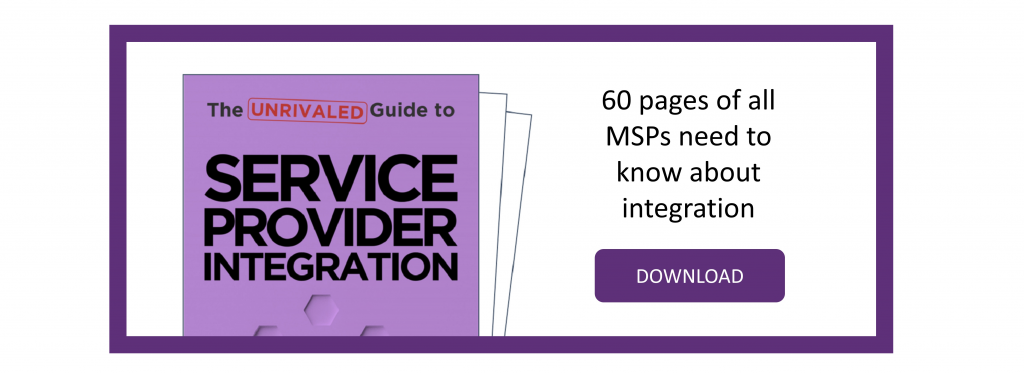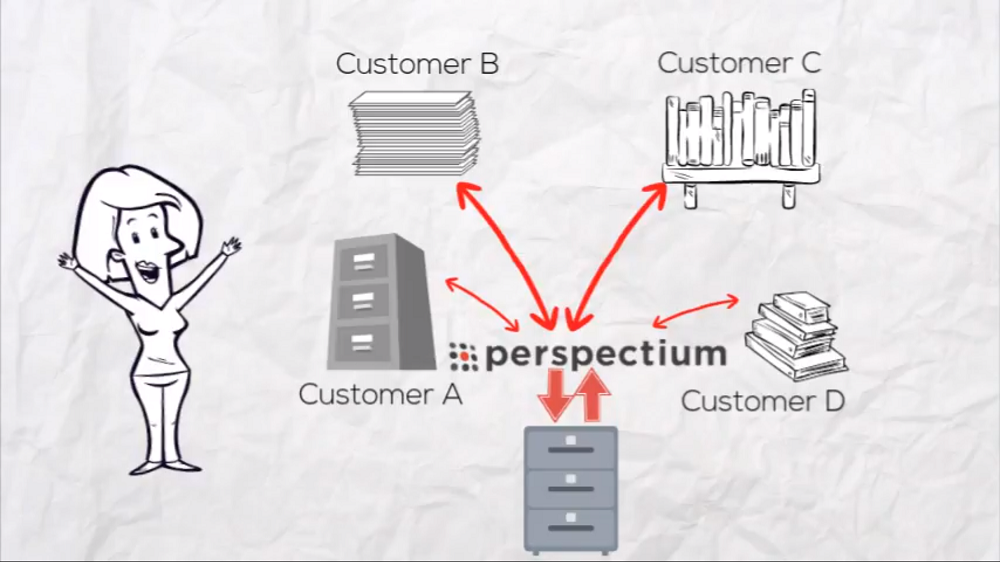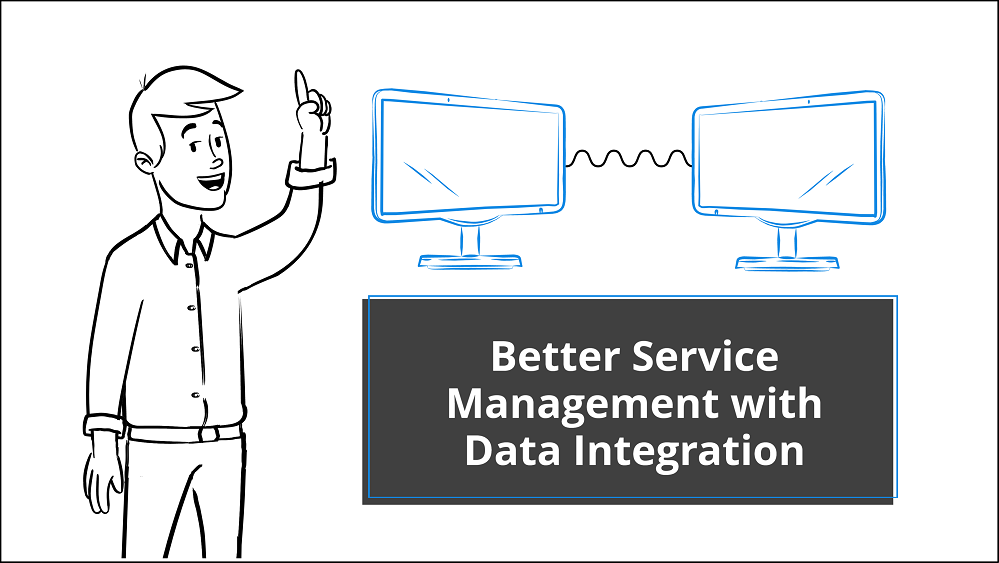5 MORE Ways That Service Providers Deliver Customer Value Through Integrations
Last week, we shared 5 ways that service providers can deliver customer value through integrations.
That post included stories of service providers who are delivering that kind of value: building trust through transparency, ensuring customer control over data, reducing incident resolution time, keeping costs low through reduced maintenance, and accelerating time to value (TTV).
Here are 5 more ways that service providers use integrations to deliver customer value.
1. Keeping Costs Low by Reducing Labor
Entering data into or querying data in multiple systems is an inefficient, swivel-chair approach that requires unnecessary work.
But even many custom integrations require more labor than necessary, often requiring ongoing developer maintenance for a solution that is supposed to be “automated”. For example, integration via web services often requires development on each new endpoint of the integration.
More labor means higher costs that, ultimately, the consumer incurs through expensive swivel-chair or custom integrations.
A better, more automated approach is to integrate via an application native to the ITSM solution. A native application combined with a common data model makes implementation simple, drastically reducing hours of data entry, custom development, and maintenance labor.
Before implementing such an integration solution, CDW customers often needed to do development work on their end to complete integration projects with CDW—at a price tag of $50,000, in one case. “That’s just not great when you’re trying to provide a solution to someone and they get a bill like that,” says Paul Liesse, Supervisor of Managed Service Application.
After implementing an integration solution via a native application, CDW now offers their customers integration solutions that require no extra coding by the customer.
It’s really nice to be able to go to the customer and say, we’ve got a solution. . . . The technical piece is super simple.
– Paul Liesse, CDW
2. Offering Enhanced Reports
A good ITSM application will offer reports within the tool. Even so, businesses often need to run reports more advanced than what the application offers.
Or they need to combine the data that the ITSM tool has access to with data elsewhere, such as in a data warehouse.
With their integration solution, Virteva offers its customers enhanced, scalable reporting.
We’re running our SLA data, our metric data, our ticket data. We’re running that all to a SQL database to do advanced reporting and analytics on that data, so we can do further trending for all of our customers that we have integrated, as well as all the additional ticket information that’s in our instance. So that to me was a huge win for us to be able to bring that data down in a more real-time fashion and a more scalable fashion.
– Matt Miller, Virteva
3. Eliminating Performance Impacts
Whether transferring data to run reports, to keep another ITSM instance in sync, or to fulfill other needs, businesses face the challenge of integrating data without creating significant performance impacts on the production instance of the ITSM tool.
The rest of the organization cannot simply stop what they are doing so that IT can run reports.
With the right integration solution in place, a service provider can create reports or perform other data replications for customers without performance impacts to their ITSM instances.
That kind of integration solution dynamically detects changes in data. Rather than relying on a batch poll, it pushes only the data that has changed, enabling the best possible throughput and flexibility with the least impact to the publishing application. Businesses can easily replicate data to as many endpoints as desired with no impact or change to the endpoints.
When we implemented ServiceNow, we used an open source tool . . . doing web services. And that worked okay for a little while. But those ETL’s put a lot of stress on ServiceNow because of how the web services work. . . . We outgrew that after a little while.
– Paul Liesse, CDW
4. Ensuring Accurate Views Through Real-time Transfer
A live view of customers and business processes gives companies actionable information. IT Directors and C-level Executives, eager to keep their teams agile, do not want a view of their companies from last week or even yesterday. They want to know what is happening right now.
If a major disruptive event occurs, service desk personnel need to know details and an explanation immediately to communicate with and assist those whose service has been disrupted.
The result: real-time data transfer and reporting, with minimal latency, is a highly desirable service. Such functions give service providers a chance to deliver extra value to customers.
We found that actually we needed [knowledge sharing] faster than once a day. . . . So if a knowledge article is updated by their team, we’re pushing that over to Virteva’s instance immediately so that our analysts that are using those articles have that most recent content to provide support.
– Matt Miller, Virteva
It seems like anytime anyone comes to you with a reporting requirement, they precede it with “real-time” reporting. . . . The idea of getting the data out of ServiceNow, into our reporting warehouse somewhat seamlessly . . . that really was a marked improvement step and really helped with the messaging around reporting and near real-time reporting.
– Jeff Lowenthal, Enterprise Architect, Accenture
5. Adding New Features and Solutions for Customers
Having an integration solution in place opens the door for a wide range of integration endpoints, giving service providers the option of offering new features and solutions with minimal implementation and at minimal cost.
The return on investment makes the offering of new service subscriptions attractive for a service provider.
After Virteva was using Perspectium for some time to integrate with the ServiceNow instances of their customers, Virteva began implementing Salesforce integrations so that they could also offer customer support for their customer base.
It’s just another endpoint that’s now connecting back to the Perspectium message bus. So it doesn’t have a material impact on my performance.
– Matt Miller, Virteva
Unrivaled Guidance on Automation for MSPs
Want to learn more about integration for service providers? Check out our Unrivaled Guide:





